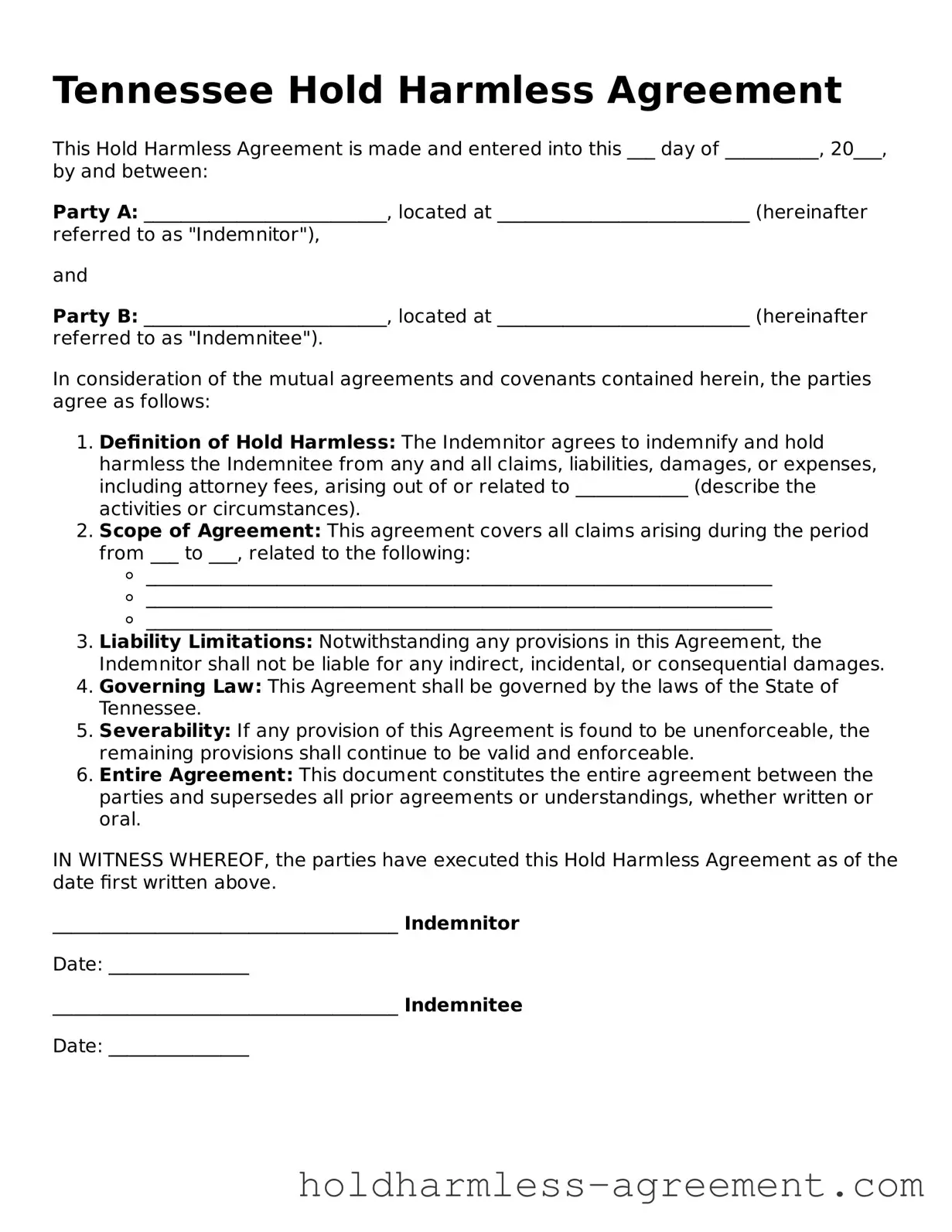Filling out a Tennessee Hold Harmless Agreement form can be straightforward, but many people make common mistakes that can lead to confusion or legal issues later on. One frequent error is not reading the entire document before signing. It’s essential to understand what you are agreeing to. Skimming through the text can result in overlooking crucial details.
Another mistake is failing to include all necessary parties. If multiple individuals or entities are involved, each must be named in the agreement. Omitting someone can leave gaps in liability coverage, which defeats the purpose of the agreement.
People often forget to specify the scope of the agreement. This means clearly outlining what activities or situations the Hold Harmless Agreement covers. Without this clarity, the agreement may not hold up if a dispute arises. A vague description can lead to misunderstandings.
Inaccurate dates can also pose a problem. It's important to ensure that all dates are correct and reflect the timeline of the agreement. A simple typo can create complications, especially if the agreement is called into question later.
Another common oversight is not having the agreement witnessed or notarized when required. Some situations may necessitate a witness or notary to validate the document. Failing to do so can render the agreement less effective or even unenforceable.
People sometimes neglect to keep a copy of the signed agreement for their records. Without a copy, it can be challenging to prove the terms of the agreement if disputes arise. Always retain a signed version for your reference.
Lastly, individuals often overlook the importance of legal advice. Consulting with a legal expert can help clarify the implications of the agreement. This step can prevent potential issues down the line and ensure that all parties are adequately protected.
